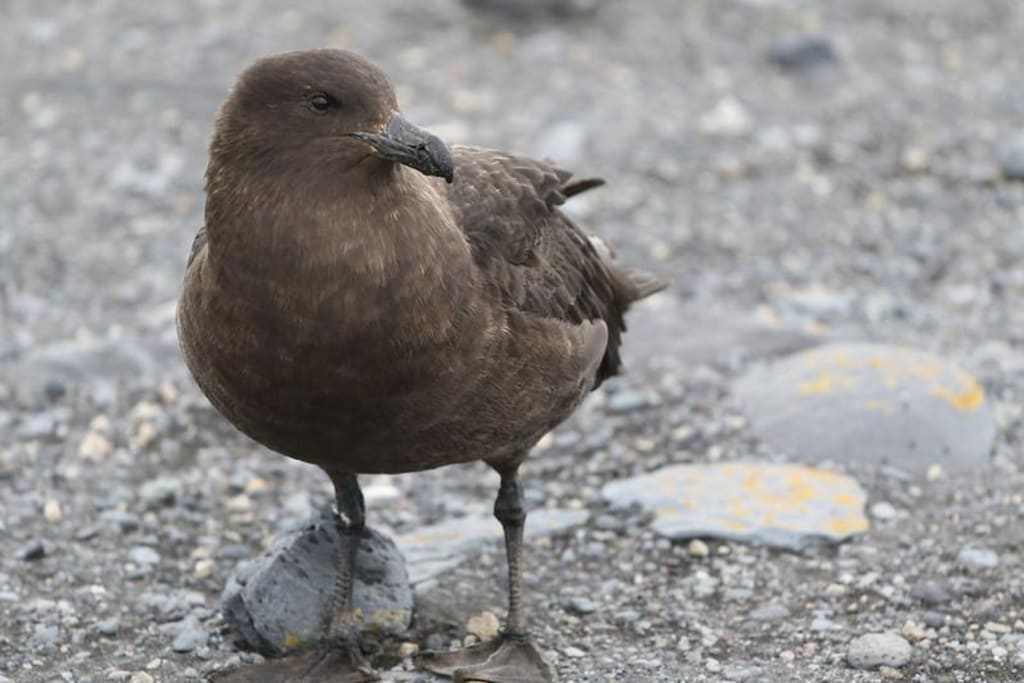Bird flu detected in Antarctic for the First Time
British Antarctic Survey

According to the British Antarctic Survey, bird flu has been detected in Antarctic seabirds, raising concerns about the potential rapid spread of the disease within dense bird and mammal colonies.
In a statement released on Monday, the British Antarctic Survey confirmed that Highly Pathogenic Avian Influenza (HPAI) was found in brown skua populations on Bird Island, South Georgia. These are the first known cases of bird flu in the Antarctic region. Situated east of South America's tip and just above the main landmass of Antarctica, South Georgia is part of the British overseas territory. The survey suggests that the birds likely contracted the disease during their migration to South America and then brought it back with them.
Earlier this year, OFFLU, a network of global avian influenza experts, warned of a significant risk of the HPAI H5 virus spreading southward from South America, where it was first detected in October 2022. In a report published on August 23, OFFLU cautioned that the virus could reach Antarctica and its offshore islands due to the migration of wild birds from South America to breeding sites in the Antarctic. This could have a profoundly detrimental impact on the Antarctic's wild bird and mammal populations, given their vulnerability to the virus and their presence in densely populated colonies consisting of thousands of pinnipeds and hundreds of thousands of birds, which facilitates efficient transmission.
Bird flu originates from naturally occurring infections in wild aquatic birds, as stated by the Centers for Disease Control and Prevention. Infected birds can transmit the virus to other animals through saliva and other bodily discharges.
According to OFFLU, Antarctica and its offshore islands are home to over 100 million breeding birds, six species of pinnipeds, and 17 species of cetaceans. Therefore, the region faces a high risk of efficient virus transmission.
OFFLU, established jointly by the Food and Agriculture Organization of the United Nations and the World Organization for Animal Health in 2005, aims to collect viral data and analyze disease patterns.
The British Antarctic Survey, responsible for the UK's scientific initiatives in Antarctica, operates two research stations on South Georgia, one of which is located on Bird Island where the confirmed bird flu cases were discovered.
These unprecedented incidents occur during a year of record bird flu outbreaks experienced by several countries. In Japan, nearly 10 million birds were culled to contain the disease, causing poultry supplies to be strained and leading to a surge in egg prices.
This is concerning news indeed. The detection of bird flu in Antarctic seabirds highlights the potential for rapid spread within densely populated bird and mammal colonies in the region. It is particularly worrying considering the vulnerability of the Antarctic's wild bird and mammal populations to the virus and the presence of large colonies consisting of thousands of pinnipeds and hundreds of thousands of birds, which can facilitate efficient transmission.
The migration of wild birds from South America to breeding sites in the Antarctic poses a significant risk of the HPAI H5 virus spreading to the region. The British Antarctic Survey's findings on Bird Island, South Georgia, suggest that the birds likely contracted the disease during their migration and brought it back with them.
Given the presence of over 100 million breeding birds, six species of pinnipeds, and 17 species of cetaceans in Antarctica and its offshore islands, there is a high risk of efficient virus transmission. This underscores the importance of monitoring and understanding the disease patterns in the region.
The detection of bird flu in the Antarctic aligns with the trend of record outbreaks experienced worldwide this year. Countries like Japan have implemented significant measures to contain the disease, such as culling millions of birds. The impact of these outbreaks extends beyond the affected bird populations, as strained poultry supplies and increased egg prices result from efforts to prevent the virus's spread.
It remains crucial for organizations like OFFLU, which gathers viral data and analyzes disease patterns, to continue their work in understanding and preventing the spread of avian influenza. The British Antarctic Survey's research stations in South Georgia play a vital role in monitoring and studying the Antarctic ecosystems, including the impact of diseases like bird flu.
Monitoring the situation and implementing appropriate measures to prevent the further spread of bird flu in Antarctica will be crucial to protect the unique wildlife and ecosystems of the region.






Comments (3)
Very dangerous news
Bird flu is very dangerous for the world. thanks for your kind information
"I'm committed to doing my part to protect Antarctica from bird flu and other threats. I believe that we all have a responsibility to care for this planet."